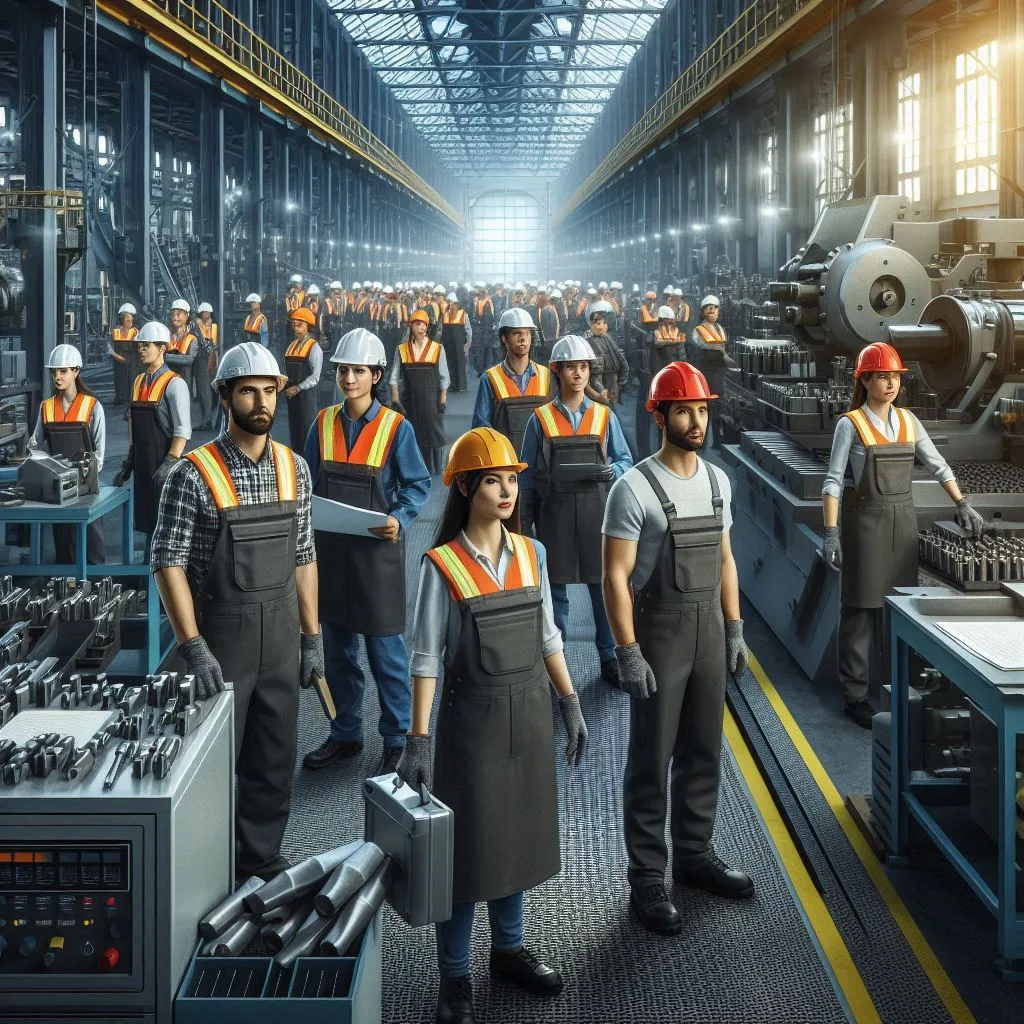Good manufacturing practices include guidelines that allow high-quality and safe products to be manufactured across different industries. In steel forging companies, Good Manufacturing Practices consists of various practices related to consistency, efficiency, and the prevention of defects during the entire manufacturing process. Steel forging companies that follow these guidelines will ensure that their products conform to stringent industry standards while protecting the health and safety of the workforce. GMP in steel forging is concerned with many elements: sourcing of materials; maintenance of equipment; quality control; employee training; and environmental issues, all concerning supplying reliable and durable steel components for a wide variety of applications.
Hire efficient steel forging workers
Hiring highly efficient steel forging workers is a key process in production standards maintenance and overall success in steel forging companies. All these come about as a result of skilled workers providing an advantage of handling complex machines and knowing about intricate processes of forging, and whether the precision required for quality steel products is there. Such workers are able to identify and troubleshoot potential issues in the production line, thus minimizing waste while maximizing value, which is cost-effective and also of better charcoal quality. By investing in highly trained workforce to their processes, companies can make safe working environments that will comply with strict regulations set by the industry. Thereby nurturing this culture of continuous improvement, business growth, and customer satisfaction will be possible, thus driving the company forward.
Make use of energy efficient steel forging machines
Efficiency in energy consumption and the multipurpose functionality of steel forging machinery spill over the benefits towards the operational costs and environment. These advanced machines are designed such that they consume less energy while performing equally or even more enhanced forging, thus reducing energy consumption levels overall while justifying the drop in production cost. Also, with multipurpose machines, processing options of open die forging, closed die forging, and extrusion on the same machine lead to greater flexibility while minimizing the requirement of various specialized pieces of equipment. Reduction in production time and overhead costs tied to factory space and maintenance for each of the specialized pieces of equipment become possible with this flexibility. An investment in these technologies would help steel forging companies become more sustainable; bring down their carbon footprint; and enhance productivity while ensuring the industry's quality standards.
Invest in Regular maintainace of steel forging machines
Investing in regular maintenance of steel forging machines is vital for ensuring their longevity, reliability, and optimal performance. Routine maintenance helps identify potential issues before they lead to costly breakdowns or production delays, minimizing downtime and maximizing machine efficiency. By keeping forging machines in top condition, companies can maintain consistent product quality, reduce the risk of defects, and prevent unexpected repair expenses. Regular inspections, lubrication, calibration, and part replacements also contribute to a safer working environment by reducing the likelihood of accidents or malfunctions. In the long run, a proactive approach to machine maintenance not only extends the lifespan of equipment but also enhances overall operational efficiency, making it a crucial investment for any steel forging business.
Sequence of appropriate forging methods pertaining to bend or shape stainless steel
One must apply the necessary forging method to stainless steel to attain strength, durability, and precision in the final product. For that, specialists know that stainless steel is tough and resistant to corrosion. So the forging methods have to be geared toward manipulating properties of the materials: open-die forging, closed-die forging, or upset forging, according to how complex the shape of the component is. The right hammering, press, or rolling methods along with temperature control will maintain the structural integrity of the material, along with achieving the expected geometry. Companies can do this careful consideration and execution of the appropriate forging method to further enhance the capacity of stainless steel components to meet the industry's tough requirements, like aerospace, automotive, and construction.
Smoothening the surface after steel forging task
The act of smoothening up the surface is defined as the work done after the forging operation. This process is imperative for the quality, functionality, and appearance of the completed component in steel. Post-forging surface finishing, in forms such as grinding, polishing, or shot-blasting, helps remove rough edges, scales, or color imperfections from the surface of the forged product. Such operations enhance not only the aesthetic look of the parts but also their statutory mechanical properties by removing surface defects leading to stress concentrations. Moreover, a shiny and smooth surface reduces the susceptibility to corrosion and ensures the component fits precisely to the designated application. Effective execution of surface smoothening enables manufacturers to provide high-performance steel components free from defect and constant with stringent industrial and client satisfaction levels.















0 Comments